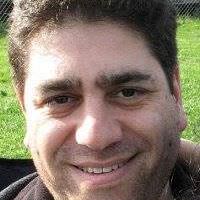Meet the Mysterious Creator Behind Marvel’s Doctor Strange
Steve Ditko, legendary comic book writer, artist, co-creator of Marvel's "Spider-Man" and numerous other classic Silver Age Marvel Comics characters, must be considered the major creative influence behind Marvel Studio’s upcoming Doctor Strange movie, based on the character he created in 1963.
Strange was initially conceived by Ditko, with some input from Marvel honcho Stan Lee, as a different type of Marvel superhero, one who used magic and mystical powers that allowed him to travel to different dimensions to battle his foes, in contrast to the Marvel bullpen of superheroes whose battlefield was strictly limited to Earth’s solar system.
Ditko created Strange to fill in as a secondary character slotted for five page backup stories in Marvel’s Strange Tales title, which featured the likes of Spider-Man, Nick Fury, Thor, and other newly created Marvel superheroes cycling through its main pages, Doctor Strange, aka. “The Master of the Mystical Arts,” and later “The Sorcerer Supreme,” with his home base in Greenwich Village and his interdimensional travels through psychedelic landscapes, took off in the 1960s as pot and psychotropic drugs like LSD began making their way into the emerging counterculture.
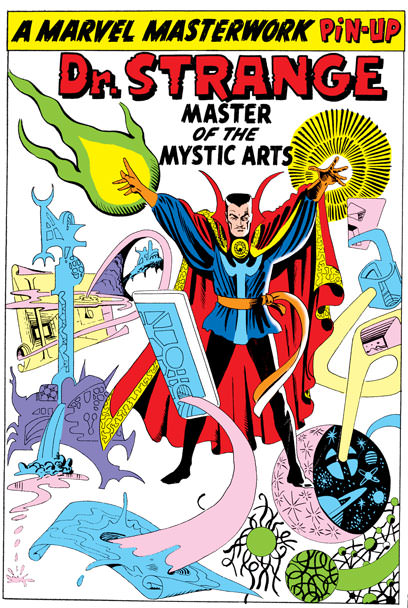
Doctor Strange Omnibus book cover with Ditko cover illo: Courtesy Marvel Comics
Once a brilliant surgeon, complete with a selfish and narcissistic personality, Dr. Stephen Strange suffers nerve damage to his hands from a car accident and can no longer practice surgery. Despondent, he travels to India in search of a rumored “Ancient One,” a mystical guru with immense powers, who, he hopes, can restore the use of his hands.
After finding the Ancient One, Strange must struggle with his own inner demons when challenged by the guru to take up many years of training in the mystical arts if he hopes to return to his former life. Initially rejecting this offer, he has an epiphany that causes him to change his outlook when he discovers that the Ancient One’s only other pupil is secretly plotting the old guru’s destruction and to then conquer Earth. Strange must commit himself to the Ancient One’s study in order to protect his mentor and Earth’s population from his ever more powerful fellow student, Mordo.
The character’s origin story was unusual compared to other Marvel characters as the doctor is forced to make a moral choice for doing good in order to acquire his powers in the Mystical Arts, as opposed to other Marvel superheroes who had to come to terms with strange powers that were thrust upon them either through birth (Thor, X-Men), or through chance (Spider-Man, The Fantastic Four).
Doctor Strange’s battleground is both the reality on Earth as we experience it, and the interdimensional landscapes Strange and his foes can travel to via their mystical powers.
Ditko’s brilliance as a conceptual artist in illustrating these interdimensional worlds drew on influences taken from many sources: surrealist painting (Salvador Dali), graphics artist M.C. Escher, Cubism, and even set designs from old horror and sci-fi movies, to name just a few. Ditko’s unique narrative graphics on Doctor Strange are considered among his crowning achievements in the comic book world.
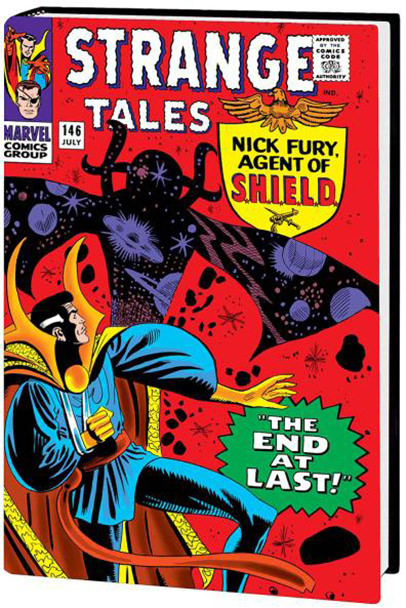
To coincide with the movie, Marvel Comics has just released Ditko’s entire 35-issue run on the book in its popular Omnibus format. It’s important to note that Ditko was limited for his entire run to five and nine page stories when the industry standard was more than double that amount for the main features. His ability to illustrate mood, suspense, character, and environment simply, efficiently, and beautifully in such few pages is testament to his artistry and is why so many in the comics world revere him.
Comic book writer and artist P. Craig Russell singles out Ditko’s art in Blake Bell’s illustrated biography Strange and Stranger: The World of Steve Ditko:
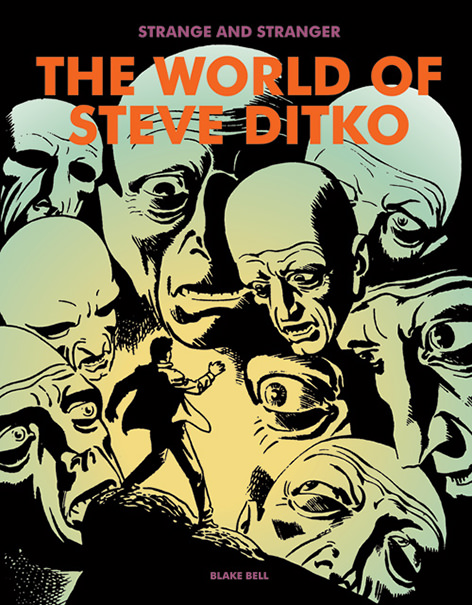
Stranger and Stranger: The World of Steve Ditko by Blake Bell. Courtesy Fantagraphics Books.
Ditko created a sense of otherworldliness that was so concrete, he was always working with these solid geometric shapes – squares, spheres and triangles – almost like cubism, in terms of tearing everything apart and putting it back at odd angles. A lot of other artists would just use a lot of smoke and mist to try and suggest something spooky. Ditko drew something that was almost counterintuitive…the way he combines it with everything else makes you feel like you're in a real place that is totally unlike anything seen before.
Also in Bell’s book, artist John Romita speaks to Ditko’s uniqueness as a conceptual artist:
I've been calling myself a ‘paid illustrator’ for years and the reason for that is guys like Steve Ditko. The difference is that when you're in their world you don't have to look around and see which part of it reminds you of them – everything reminds you of them. So when you talk about an artist like Steve Ditko you have to put them in a special category. They are what I call creators, the rest of us are illustrators.
In addition to the recently released Doctor Strange Omnibus, an overview of Ditko’s entire career is covered in the sumptuously illustrated Ditko Unleashed!, a Museum catalogue that accompanies a massive exhibition of his work that opened on September 29th in Palma de Mallorca Spain.
Ditko, a private man who gave his last of very few interviews in 1968, continues, at age 89, to work in midtown Manhattan producing his own line of comics, released through publisher Robin Snyder.
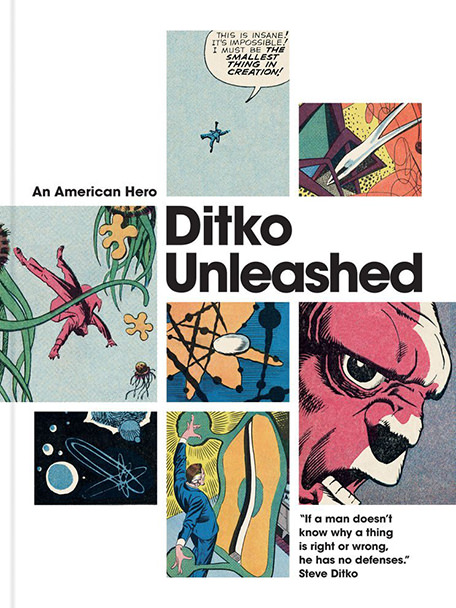
Ditko Unleashed book cover: Courtesy IDW Publishing


